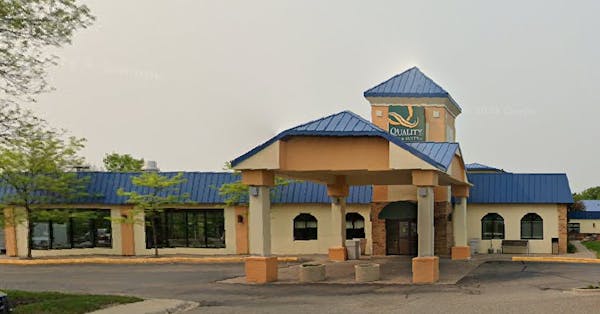Six months after public outcry prompted Dakota County to pause plans for its first permanent adult homeless shelter, county leaders are ready to try again with a different approach.
Last fall, the county was moving forward with plans to apply for a state grant to help fund the purchase of an Eagan hotel and convert it into a homeless shelter. But after hundreds of residents packed a County Board meeting in protest, voicing concerns about public safety and nearby businesses, the county shelved the idea.
This time, county officials say they're moving slowly, concentrating on engagement and outreach to help allay residents' concerns as they work to identify a new site by mid-2025. But they're also aware that the number of people in need of shelter in south metro cities is growing, so a solution must be found soon.
"There's a tension in all of this planning because we have an urgent need now, which is that people experiencing homelessness are in need of support," said Dakota County Social Services Director Evan Henspeter. "What we're doing now is not ideal."
Dakota County funds several efforts to help homeless people, in collaboration with other organizations, at an annual cost of $12 million, officials said.
That includes sheltering single adults in local hotels, providing housing at Dakota Woodlands family shelter in Eagan and investing $600,000 yearly in operating Cahill Place, an apartment building that also provides services to 41 recently homeless families.
Henspeter said he's concerned because the county is reliant on hotels' willingness to rent out rooms. He's hopeful that as the county increases its public outreach about shelter planning, more people will understand why officials are looking for other solutions.
"I do think that going through a process of inviting people in ... does make a difference in shifting the balance away from fear and stigma winning the day," he said.
Dakota County Commissioner Joe Atkins said the county has been busy doing its homework.
"We learned a valuable lesson from when we tried to do it too quickly," he said.
The shelter won't be what some people were picturing, with long lines of people outside, said Dakota County Commissioner Liz Workman. Clients will be vetted and the facility will have staff and security, she said.
The county's goal
A county-organized housing work group identified the need for a permanent shelter for single adults in the fall of 2021 and recommended the county invest in more affordable housing and homelessness prevention.
"The one that is hard to move forward and that we've been working on for two-plus years is the shelter conversation," Henspeter said.
All seven county commissioners have said publicly that they agree on the need for the shelter, he said.
The county is open to building new, or converting an office or hotel into a shelter. The Norwood Inn, the Eagan site proposed in September, is still on the table. It rose to the top of the list because of its convenient location and lower appraised value than other hotels. It would have been renovated to include 55 separate rooms and social services on site.
Residents said they opposed the grant application because the location is near a park, several restaurants and a Montessori school. They also pointed to the lack of time for public comment and the $24 million cost to buy and remodel it.
Officials are now looking for a site that's accessible to transit and walkable. It should be close to community amenities like a grocery store and pharmacy and ideally near green space and retail.
'Hidden' homelessness
Trying to estimate how many people in Dakota County are unsheltered is tricky, with multiple data sets and varying definitions of homelessness.
A recent report by Wilder Research found that the number of homeless Minnesotans dropped 7% in the past five years, though several sources said the opposite seems to be true.
"[Decline] has not been our local experience," Henspeter said, adding that the county's 2023 Point-In-Time (PIT) count found 104 unsheltered people, the highest number yet.
Amber Hanson, director of housing and homeless services for Ally Supportive Services, a organization that collaborates with Dakota County, offers three different programs to help homeless people: Street Outreach, the Housing Support Team and Emergency Shelter.
Hanson said she usually doubles or triples the PIT count figure for an accurate estimate. Ally has contact with 400 to 500 homeless people monthly, though that number could include people from other counties. "Absolutely [homelessness] numbers are going up," she said. "Our numbers show it and we feel it."
She said she's excited about the coming Dakota County adult shelter and supports the county's slower pace and emphasis on community education.
"I'm ok with it if that's what it takes," she said.
She hopes the shelter will be "low barrier and easy access," she said. "We need to simplify it too, we'll shelter you if you need it," she said.
Dakota County homelessness is different than in Ramsey or Hennepin counties, she said.
"It's more hidden. We have more people in cars and hiding in these well-known and wooded areas ... and you would never think it," she said.
Amy Piotrowski, student support services director for Burnsville-Eagan-Savage schools, said there were 326 homeless students in the district in early March — and that's just the ones they know about. She's seen a "slight increase" in numbers over the last few years.
Lisa Lusk,director of programs and operations for the nonprofit 360 Communities, which runs five food shelves and other services to prevent homelessness, said there's a huge need for the adult shelter. Her organization stops doing new intakes after the first two days of each month. By then, they've already had 100 to 150 calls from people who need rent assistance.
"Everybody is as overwhelmed as we are," she said.

DFL Sen. Nicole Mitchell returns to Capitol after burglary charge, casts votes amid criticism
Police now say all 5 women have so far survived rollover of SUV exiting I-94 in Minneapolis

Brooks: Kristi Noem's tale of killing her dog backfires

Defense attorneys in first Feeding Our Future trial say defendants served 'real food'

